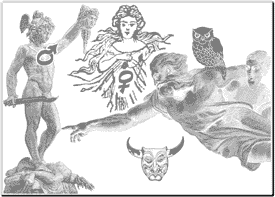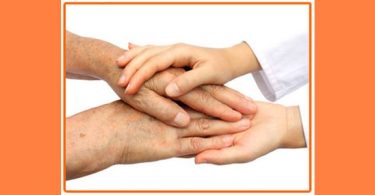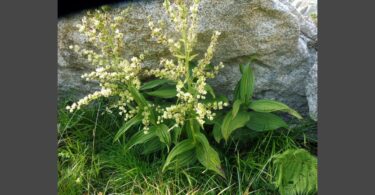Portions of this article are excerpts from a book on Archetypal Materia Medica currently being written by the author. Copyright 2010 Jane Tara Cicchetti All rights reserved.
 Understanding what a substance can cause and cure is a very important aspect of homeopathy. This is discerned primarily through provings and clinical experience, but there are many other ways to understand the curative powers of remedies. We can learn much about what they can cure by studying the substance itself, its chemical makeup, attributes, and how it has been used in ancient and modern medicine. From my point of view, the more familiar we are with a substance the greater chance we have of benefiting more people. I would like to share some of the ways that I utilize my understanding of Jungian psychology to explore our materia medica.
Understanding what a substance can cause and cure is a very important aspect of homeopathy. This is discerned primarily through provings and clinical experience, but there are many other ways to understand the curative powers of remedies. We can learn much about what they can cure by studying the substance itself, its chemical makeup, attributes, and how it has been used in ancient and modern medicine. From my point of view, the more familiar we are with a substance the greater chance we have of benefiting more people. I would like to share some of the ways that I utilize my understanding of Jungian psychology to explore our materia medica.
This paper will cover the following: the relationship between some principles of Jungian psychology and the symptoms displayed by the homeopathic patient, a discussion of the remedy Cathartes aura, Turkey vulture, from an archetypal perspective, and finally, some short excerpts from three cases that were successfully treated with this remedy.
Symbolism in Provings
Homeopathic provings provide us with physical, general, and mental symptoms but also contain symbolic material that point to the deeper levels of the psyche. A great deal of this symbolism comes from dream images of the provers, but can also be contained within repeated or strange, rare, and peculiar ideas or themes. When these symbols are linked to the ancient symbolic themes associated with the substance, they can show us what effect the remedy can have on the deepest levels of the human psyche. These symbols are not ultimately significant for their meaning but because they point to a greater, unknown reality. Working with archetypal symbols allows for the possibility of healing that goes beyond what is expected or conceived of from a more limited perspective.
In my experience, when physical and mental symptoms have been deeply suppressed, as so often occurs in modern practice, it is necessary to use information from the symbolic realm, i.e., from dreams and unusual themes. Researching the symbolism, from provings and the substance itself, reveals the role that a particular remedy plays within the human psyche of an individual and more generally within the collective unconscious.
The Collective Unconscious
The idea of the collective unconscious and how it affects humanity was one of Carl Jung’s great discoveries. He observed that patients had dreams and fantasies of mythological themes and ancient symbols of which they had no conscious knowledge. Furthermore, he saw that his understanding of and respect for these motifs and images played a crucial role in the healing process of these patients.
From this observation, Jung deduced that there was a level of the psyche that was beyond the individual, but had a profound effect on the behavior and health of the patient. His clinical research, (Jung based all of his ideas upon his work with patients) revealed that the symbolism of the collective unconscious was stimulated by what he called archetypes.
Definition of Archetypes
The archetype is a subject that has become surrounded with much fantasy and confusion. For the concept be truly useful for the homeopath, it is important to define what Jung meant when he used this term.
Jung likened the archetype to the invisible presence of the crystal lattice in a saturated solution that has the potential to form a crystal. Likewise, the archetype is invisible potential, and once crystallized into an inner image, displays a process that is occurring within the human psyche. The purpose of the formation of this inner image is to have a strong or compelling effect on consciousness – i.e., it is attempting to get one’s attention.
While there are unlimited numbers of archetypes, there are some that show up repeatedly in clinical practice, including the archetype of the shadow, the male/female polarity of anima/ animus, and the archetype of the father, the mother, and the child. Each archetype represents a core pattern within the collective unconscious. It is an unconscious force that has a profound effect on the personality, moods, and inclination of the individual. It can also affect the body, and plays an important role in stimulating interests, intentions and the specific direction of the mind.
Polarity of the Archetypes
One of the goals of Jungian analysis is the reconciliation of opposites – the conscious retrieval of parts of the psyche that have been relegated to the unconscious. Jung felt that it was important for as many people as possible to achieve this goal. This is because the suppressed material of each individual builds up within the collective unconscious, a phenomenon Jung called the collective shadow, and can eventually erupt in violent outbursts. Conversely, when each person takes responsibility for his or her shadow material by making it conscious, that clears a small part of negative energy from the collective unconscious. It is possible for a motivated client to achieve the reconciliation of opposites through homeopathic treatment, especially if the homeopath has some knowledge of the structure of the psyche and knows how to work with dreams. Whenever a remedy stimulates a deep level of healing, it is likely that some reconciliation occurs even if the homeopath is not consciously engaged in that process.
All that exists in the physical world as well as the world of the psyche is two sided – positive/negative, light/ dark, masculine/ feminine. Thus archetypes have a negative as well as a positive side. While the ego must not attempt to imbue itself with the full force of an archetype, a situation that can cause inflation, it is often necessary to integrate aspects of archetypal energy into individual consciousness. Otherwise, the archetype continues to have a powerful effect on the health and well-being of the person who is possessed by this energy. It is more common for the negative aspect of the archetype to be buried in the collective shadow, so much of the work requires conscious acceptance of the shadowy, negative pole of the archetype. This is part of the process of the reconciliation of opposites; bringing together what was unconscious with what is conscious.; accepting what was once unacceptable in order to create wholeness.
Jungian Definition of a Complex
Jung’s definition of a complex is an emotionally charged group of ideas or emotions that accumulate around an archetype. The complex interferes with the individual’s conscious activity and has, so to speak, a mind of its own. It can be caused by shock, trauma, or any other experience that sets up a conflict within the individual psyche.
While the idea of the complex is not unique to Jungian psychology, what is unique is the idea that the core of the complex is connected to the collective unconscious through an archetype. This is a very important point for the homeopath to note, as the simillimum is more often similar to this archetypal core than it is to the peripheral symptoms.
Hopefully, this definition of the archetype and its complex will help the homeopath understand that most of the information that is gathered in case taking is the display of an archetypal influence. Just as the anamnesis of one person may reveal a very clear remedy picture and others are murky and confused, the archetypes are sometimes clearly seen and other times are extremely undifferentiated. Archetypes do not exist individually but are always cross contaminated by one another. The less conscious the individual, the more contamination exists.
Because unconscious archetypal forces play such a primary role in the development of symptoms and the conscious state of an individual, it can be useful to study materia medica from that perspective. It is then possible to match, not only the physical, general, and mental symptoms in the case, but the archetypal influences as well.
In some cases, there are not many symptoms on the conscious level but the archetypal influence is quite strong. Certain remedies seem to lend themselves more to this type of prescribing and one of these remedies is Cathartes aura, turkey vulture.
Cathartes aura
In his proving of Cathartes aura, Todd Rowe considers the theme of “Catharsis” to be central to the remedy. “Twelve of the eighteen provers described catharsis followed by feelings of calmness and peace. A number of individuals pursued meditation or yoga, which they either had never done or not done for years” 1 Catharsis also appeared as feeling like an exorcism had taken place, physical cleansing as in the draining of boils, pus coming out of the body, dreams of evacuation, and a vision of a phoenix arising from the ashes indicating rebirth.
Another theme is that of “Guardian/ Care Taking”. The provers experienced dreams of being taken care of or caring for children or animals. While there are many other themes in the proving, I would like to address these and one final theme, that of “Invisibility”. Provers felt as if they did not exist or like they were transparent.
The Turkey Vulture is a new world raptor and differs from the ancient birds of legend. The mythology of Vulture in general, as well as the Turkey Vulture specifically, will be useful in investigating the relationship between the themes of the proving and the archetypal symbolism associated with the bird.
Guardian/Caretaking and the Great Mother
The vulture or griffin as it is sometimes called, has been known since ancient times. The early Egyptians associated it with the Great or Primordial Mother. First seen in Egypt as Nekhbet, the vulture headed goddess who was the guardian of the upper region of the Nile. She is one of the oldest of the Egyptian goddesses and ruled over death and rebirth. Nekhbet later became known as the goddess Mut, but still retained her connection to the earlier vulture goddess and is shown wearing a vulture headdress. Still later, she becomes Isis, who continues with the symbolism of the vulture and is seen wearing her wings. The Egyptian hieroglyphs for “a” and “o” are a pictograph of a vulture and the name for mother is this hieroglyph.
Indigenous to North America, the Turkey Vulture follows the dichotomy of the Great Mother who is the giver of life, the beneficent caretaker in her positive form, and in her negative form is the Terrible Mother associated with death, destruction and rebirth. She is one of the most beautiful of birds when seen soaring overhead following thermals high in the sky and one of the most hideous when seen on the ground. When earthbound, her bare red head and neck is often immersed in a carcass that she is in the process of devouring.
She lives off carrion and is therefore associated with death and decay, but unlike many other life forms, she never kills. As a scavenger she provides a cleanup service for the planet. She is the ultimate recycler. This leads us to the theme of catharsis, which is about the purging of physical waste from the body as well as exorcism of negative emotional and psychic forces.
Catharsis and Re-birth
The concept of cleansing and exorcism is repeated in the mythology of the Pueblo Southwest Native Americans who believed the Turkey Vulture to be a symbol of purification and used its feathers during ceremonies to remove evil influences from the environment.
Jung has written about the vulture in reference to the subject of rebirth. According to him, it refers to being born of the spirit rather than through the womb of an earthly mother. He goes on to say that the vulture was thought by the early Egyptians to be always female and fertilized by the wind. The idea of being impregnated by the wind or pneumena points to an unearthly or spiritual birth rather than a physical birth.
The vulture, in these cases is, according to Jung, a symbol of rebirth rather than actual birth requiring a mother and a father, and therefore symbolizes the second mother- the mother that is involved in rebirth, due to psychological or spiritual factors.2 In the ancient symbolism of the vulture as well as in the homeopathic proving, we see the theme of being born anew after a catharsis or exorcism, the “phoenix rising from the ashes” experienced by one of the Cathartes provers.
Invisibility
The Great Mother is an archetype that is associated with the earliest levels of consciousness and is continually drawing the individual back into the womb of the unconscious. Cathartes aura, is a remedy that is deeply connected to the archetype of the Great Mother in one of her most frightening forms. It is that which swallows up consciousness, leaving nothing but the primordial abyss of darkness in the human psyche. This is the psychological reason why the mother archetype has been associated with death and why she is often portrayed as the vulture.
Eric Neuman, in his treatise on the development of the mother archetype, The Great Mother, tells us that the vulture is associated with death. “The Egyptian Mother Goddess as vulture gives protection and shelter, but she is at the same time the death- bringing, corpse-devouring womb goddess of death.”3
Because so much has receded into the unconscious, the individual needing Cathartes, receives little help from most types of psychotherapy. Even their dreams may be lost to their conscious mind. While they may be able to function very well on the intellectual level, they feel that they have lost or never experienced an essential part of themselves. This loss of inner self also makes them unrecognized or unappreciated by the outside world. It is as if their inner essence, their individuality is invisible to themselves and others. This is the inner dynamic of the invisibility seen in the proving.
From this brief overview of the early symbolism of the vulture we can see the themes of rebirth, cleansing and purification, in other words, the catharsis of the Cathartes proving. The theme of caretaking and guarding in the proving is consistent with the symbolic relationship between the vulture and the Great Mother. The theme of invisibility is seen in the archetype of the Primordial Mother drawing consciousness into the unconscious. Feeling invisible or being invisible to his or her inner state is a very hidden but essential symptom in the life of the individual who can be helped by Cathartes aura.
Three Cases
The first two cases have been published in Homeopathic Links and are very worthwhile reading. The first is from Allison Douglas-Tourner. Here the “invisibility” is seen in the client’s ability to see what is “dead” in others and her dreams of zombies. It is a clear picture of what it is like to be completely detached from the inner state. The author analyzes the case in the following way:
“Her dreams of zombies are significant. She dreams of “people who are empty inside, alive but vacant, just not there.” She is describing her own state. She is not fully in her body. She exists in a kind of dead zone where she is open to all kinds of energies. She sees ghosts (dead people). She sees “what is dead in people, what they need to do to move on.‘ Unfortunately, she doesn?t seem herself to have the ability to move on.” 4
The theme of the need for catharsis is seen in the many chronic infections, chronic sinusitis, strep throat, tonsillitis, and ear infections that were resolved after the remedy. And, the desire for this catharsis may have been the unconscious reason for her wanting to have a phoenix and dragon tattooed on her every since she was a child.
The second case, is from Cynthia A. Shepard. This is a case of a man who was severely abused by a manipulative woman for support of a child. Here is the homeopath’s analysis.
“I saw this as a case of abuse: a gullible man raked over the coals by a self-serving and manipulative woman. It?s one of the oldest entrapments in the book for women to employ and it worked beautifully in this instance. And at what cost to my patient – how did he respond? Although he had indeed carried on and risen to meet his obligations he had been forced to swallow a huge pill of injustice and this had rattled his moral fibre.” 5
Another big issue was that in his work, he was treated as if he were invisible even though he was very capable. His company depended on his creativity and ability but he was never acknowledged and it weighed on him.”
The extraordinary abuse by a woman in this case points to the negative mother complex. He is subjected both outwardly to the devouring mother, in the form of the abusive woman, and inwardly, by his invisibility, i.e., his inner world being devoured by the great mother archetype. This is an excellent example of the inner state of the individual being reflected or projected into the world around him.
The third case is of a thirty-nine year old woman who came to me after being dismissed by four previous homeopaths because they said they could not find her remedy. She is an unusually motivated client, willing to give the process time, and very enthusiastic about homeopathy.
She is tall and slightly overweight, has been single for many years, but would like to be in relationship with a man. While she had some symptoms, including amenorrhea for several years, and “life-long “low key depression her main complaint was that “I bypass the emotional. Conventional therapy doesn’t work for me because I have such a strong edit. I want to look at my shadow side, but I can’t reach it.” She is a very intelligent and hard working accountant, but was ignored by the clients for whom she worked.
The amenorrhea and the fact that she had very little mothering as a child, as well as her lack of ability to access her emotions was a clue that we were dealing with an issue around her connection to the feminine. After a few remedies, including Emerald and Sepia, that helped her remember her dreams, she began to speak of her invisibility to her clients. This, along with the disconnection from her inner world, led me to finally consider Cathartes.
After Cathartes 1M she says she feels “fabulous- no depression” and had the following dream:
“I’m on a highway overpass on a bike- there’s a concrete median. I’m the only one on the road. I look over and there is a body, half on the curb, half on the sidewalk. He’s dead. Police are all around investigating. I have a feeling of horror. Then I’m riding back and I think, I hope they’ve taken the body away. I’m going up a steep incline and started to go backwards.”
I always ask what the client thought and felt about a dream. She says the dream disturbed her for a few days. She thinks that the body was that of her dad who died when she was nine years old because it was in a uniform like her father wore.
When someone dreams of a person dying, after taking a remedy, it often indicates that they are exorcising some no longer needed aspect that has been dwelling in their psyche. In this woman’s case she seems to have let go of the trauma surrounding her father’s death.
After a few more months, she began to have regular periods. She told me that she used to binge on food for emotional comfort but now eats moderately. Over the last year, she has lost fifteen pounds. She continues to be emotionally and physically well and looks forward to further transformation.
Conclusion
Cathartes aura can, when indicated, help the individual retrieve their inner world, or soul, as it has not disappeared completely, but has been swallowed by the darkness, by the Great Mother. It is this archetype that is both the powerful unconscious aspect of life and the source of creativity. She who gives birth is also she who devours and buries. Retrieving what has been devoured by the Great Mother archetype is a kind of rebirth and renewal symbolized by the phoenix rising from the ashes. This is a theme that has been part of the symbolism and mythology of vulture since ancient days. The proving of Cathartes aura, and its clinical application show it to be an effective remedy aligned with this mythological background.
The archetype of the Great Mother appears in many forms and is a major influence on all of us in one way or another. Only when an archetype appears as a central issue in a case, is it a consideration for the homeopath. How and to what extent each of the individuals in the three above cases will ultimately resolve their archetypal dilemma is a very unique and personal experience. The path that each travels and the destination he or she reaches has much to do with the strength and inner purpose of his or her life. But in the meantime, a well indicated homeopathic remedy should give health and vitality to speed the journey
Notes
1 Todd Rowe, Rowe’s Turkey Vulture Proving (Reference Works, 4.2.1.1 Kent Homeopathic Associates, San Rafael, CA 94901).
2 C G Jung, Symbols of Transformation, vol 5 of Collected Works or Carl Jung (Princeton: Princeton University Press, 1990), 225
3 Erich Neumann, The Great Mother, (Princeton: Princeton University Press, 1983), 146
4 Allison Douglas-Tourner, “Zombies, Exorcism, and Walking Back into the Body, A Case of Turkey Vulture,” Homeopathic Links Vol 22 Spring 2009: 26-30.
5 Cynthia A. Shephard, “Bird and Bird-like – Susceptible to or Being the Unseen Force, Part One- Cathartes aura, A Man Feeling Raped,” Homeopathic Links Vol 22 Spring 2009: 31-37.







DEAR DR,
Cathartes aura 1M I DO NOT THINK IS AVAILABLE IN INDIA. SEVERAL TIMES I HEARD A PROVING HAS BEEN DONE. WHEN I WAS A STUDENT DR JUGAL KISHORE PROVED A REMEDY FROM DHOOP GRASS. WHEN I WENT TO HOMEOPATHY STORES, IT WAS NOT AVAILABLE. VITEX.NEG VERY MUCH APPRECIATED FOR MALARIA IS NOT AVAILABLE IN DELHI. EVEN MOTHER TINC=Q ARE NOT AVAILABLE OF SO MANY REMEDIES. DR. HAS EMPHASIZED THE POWER OF DREAMS IN CURING A CASE OF MENTAL DISORDER. I HAVE BEEN TOLD THAT A PERSON IF BLIND BY BIRTH DOES NOT SEE ANY DREAM AND THEREFORE THESE MENTAL PATIENTS CAN NOT BE TREATED BY THEIR DREAMS.
THE ARTICLE IS VERY INFORMATIVE AND IT IS OF GREAT VALUE FOR CURING SUCH CASES BY HOMEOPATHY.
THANKS
DR SHEKHAR
Dear Dr. Shekhar,
Thank you for your comments. I am sorry to hear that Cathartes aura is not available in India as yet. However, it is available through Hahnemann Pharmacy in the USA http://www.hahnemannlabs.com/.
The dreams of blind people have been a subject of much interest and research over the last 100 years. I have not personally discussed dreams with a congenitally blind person, but we do know that these people recall dreams though auditory processes and use descriptions that appear to be visual – like using descriptions of an object.
Best wishes, Jane Tara Cicchetti
Yes, I have confirmed the details of vulture many times. I strongly recommend this medicine for suppressed and dumped conflicts giving very many physical troubles. I have it in 10m potency,
Thank you very much, it is really a very interesting article!!!